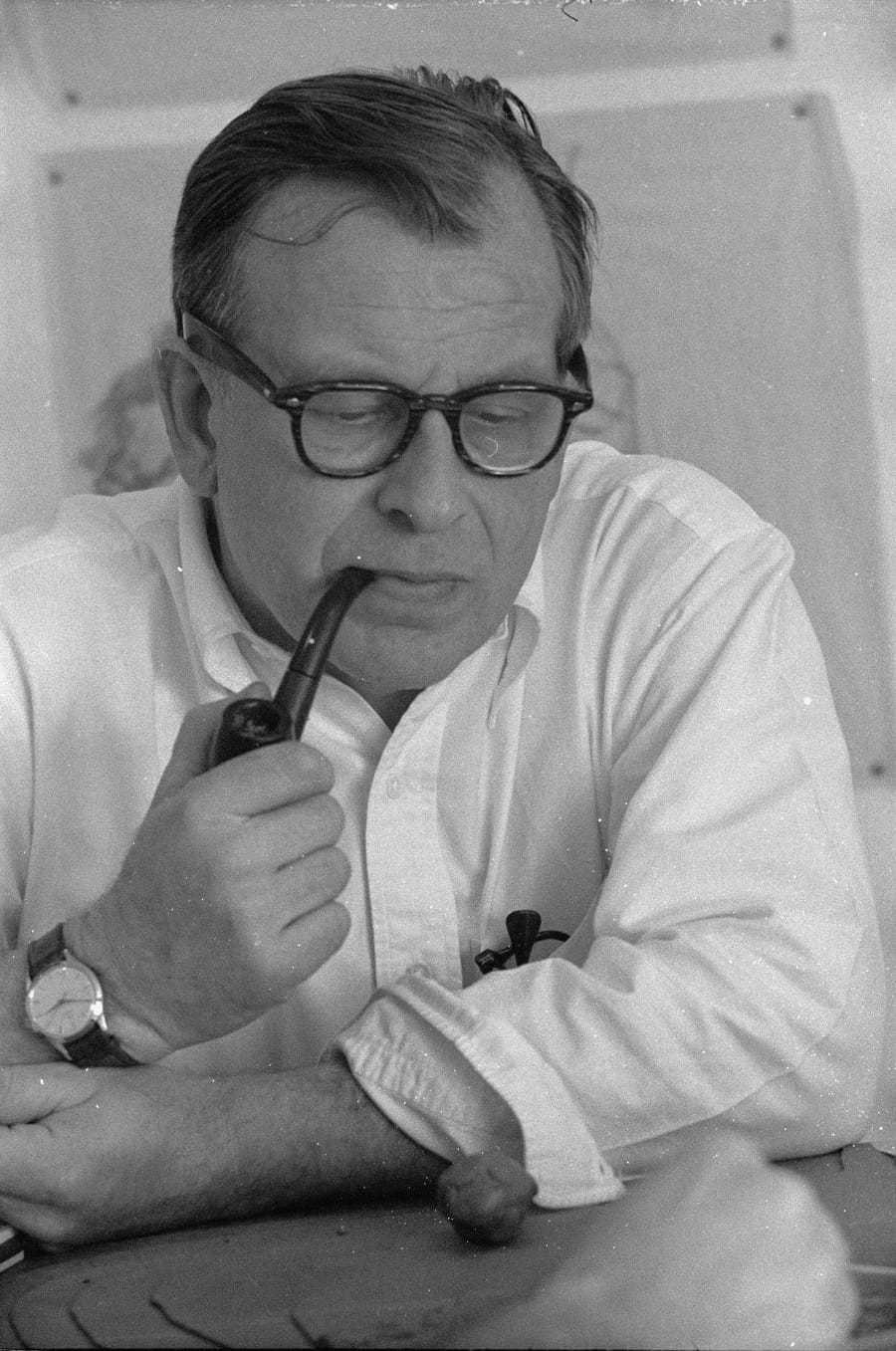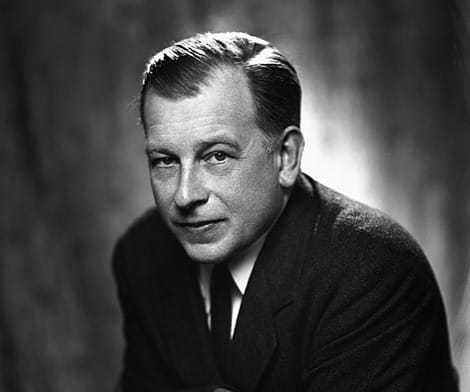
The Office of Strategic Services (OSS) was composed of elite, highly intelligent, ambitious patriots. Many were Ivy-league educated, all accomplished in their own right. However, sprinkled throughout the service were a handful of OSSers who became very well-known and who achieved great fame. Celebrities such as chef Julia Child, baseball catcher Moe Berg, and actor Sterling Hayden all worked for the wartime OSS.
Counted among their ranks is Eero Saarinen (pronounced air-oh), the prodigious Finnish American architect and industrial designer known for his neo-futuristic style. He lent his services to the spy agency before achieving world-wide fame as one of the masters of American 20th-century architecture. Saarinen was a prolific architect who designed national memorials, corporate campuses, and airport terminals. His most widely recognized design is the iconic Gateway Arch in St. Louis, MO, the tallest man-made national monument in the United States.
An intensely serious architect, Eero flawlessly designed buildings to make expressive statements. He was creative, open-minded, and original in his designs. He paid close attention to every minute detail in the design process. His originality, creativity, and pursuit of perfection landed him on the cover of Time Magazine, earned him first place in numerous architectural contests, and caused his work to be showcased on the silver screen.
At the time he was recruited to join the OSS, the organization considered Eero to be “the most versatile and gifted young designer and architect in this country.”
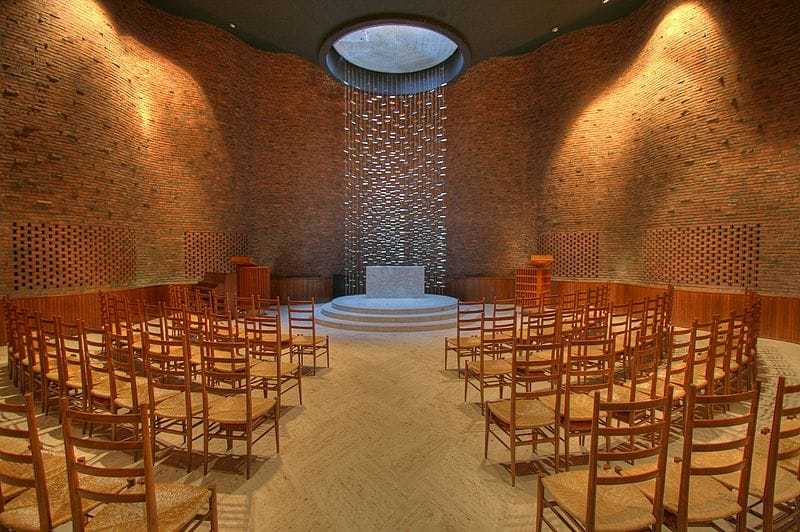
Enchanted
Eero was destined to become a great artist. He was the son of Loja Saarinen, a renowned textile designer, and Eliel Saarinen, a famous National Romantic style architect. He was born on August 20, 1910, on his father’s 37th birthday. Eero grew up in the countryside of Finland in a house designed by his father and two others: it could easily have been mistaken for a castle.
The country estate, dubbed Hvittrask, was so large that all three designers lived there with their families. The residence, located deep in the forest, was built of logs and stone, and it was surrounded by thick woods, wild nature, and the banks of the White Lake. The constant presence of Eliel’s artistic friends left a lasting impression on the budding designer. Small enough to hide under his father’s drafting table, Eero captured the attention of the estate’s visionary guests with his neophyte talent.
In 1922, Eliel entered a competition held by the Chicago Tribune to design the metropolitan newspaper’s new headquarters building. Eliel won second place and $20,000 for his entry. Inspired by his placement, the Saarinen family moved to an estate in Bloomfield Hills, Michigan the following year. Eero was 13 years old. Eliel was commissioned to design the Cranbrook Academy of Art, which has been described as “the most enchanted and enchanting setting in America” and which in 1989 was designated a National Historic Landmark. Thus, Eero moved from one enchanted manor to the next.
Eero attended Cranbrook Academy where his father became the first president as well as chief architect. He took courses in furniture design and sculpture, and it wasn’t long before Eero was designing cast-iron gates, dining room furniture, and gargoyles for the academy’s campus. While there, Eero had the privilege to meet Frank Lloyd Wright when he came to lecture at Cranbrook.
In 1929, Eero moved to Paris, France, to study sculpture. A year later he returned to the US to attend Yale University, where he graduated from the Department of Architecture in 1934. He was then awarded a scholarship that funded his travel to Europe and North Africa. After completion of the scholarship, Eero returned to his native Finland, where he spent a year working at an architectural office in the nation’s capital.
Eero later confessed that it never occurred to him to do anything but follow in his father’s footsteps.
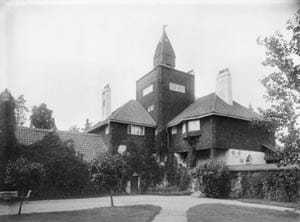
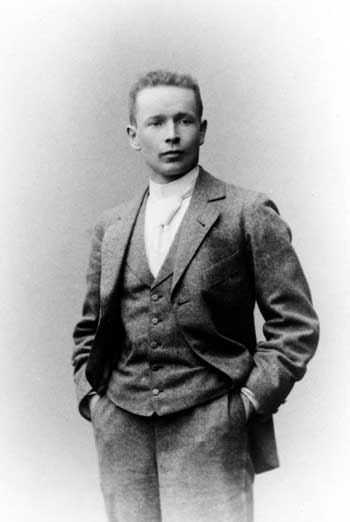
And the Winner is….
After his European tour, Eero joined his father at Cranbrook to teach, work on furniture designs, and compete in architecture contests. It was very common in those days for architecture competitions to be held. These competitions, in fact, are what launched Eliel’s career.
And so, in 1938, when a competition was held to design a museum for the Smithsonian’s Gallery of Art, the Saarinens enthusiastically sent in their submission. Eliel and Eero’s design unanimously won first place. Though ultimately the design was rejected by the Commission of Fine Arts, Eero, just 29, was prominently featured in the press for his winning design that beat out 400 other entries.
In 1940, Eero entered another competition, this one held by the Museum of Modern Art, challenging designers to submit furniture, lamps, and textiles of “organic design in home furnishings.” Eero and his partner won first place in both the chair design and living room categories. The prize packet included exhibition of their work and contracts with major department stores.
Eero also won architectural competitions for the Festival Theatre of William & Mary and the California Post War House.
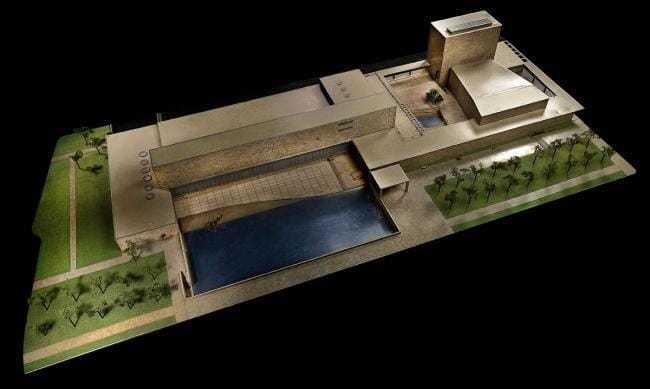
Irreplaceable
Shortly after World War II broke out, Eero became a naturalized citizen of the United States. He was recruited by a former classmate at Yale to join the OSS where he worked until 1944. It was the same classmate who several years prior had recruited Eero to work on the Futurama exhibit for the New York World’s Fair, an experience they now found directly relevant to their work at the OSS.
At 32 years old, Eero was appointed Chief of the Special Exhibits Section of the Presentation Division. He was responsible for designing and constructing military schools and situation rooms, along with the display equipment used in the various War Department conference rooms. He created a revolutionary three-dimensional organization chart that was instrumental in presenting problems of procedure and work-flow through various parts of the organization.
Eero also used his creative talents to build true-to-scale models. He built models of weapons for use in training scenarios, and he created models and props for use in films.
Saarinen lent his creative talents to other government organizations as well throughout the war. His architecture firm was chosen by the National Capitol Housing Authority to aid the war housing program by designing the Hillside Dwelling. While undertaking this project, Eero continued to work for the OSS twice a week.
Saarinen’s work for the OSS was highly commended by the Undersecretary of War, the Chief of the Bureau of Ordnance, the Director of the Women’s Army Corps, and many others. His experience and experiments during his time with the OSS are reflected in his later design work. Because of his unique talents and specialized experience, Eero was deemed irreplaceable.
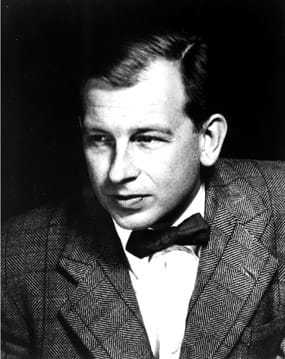
Time Magazine
At the war’s end, Eero returned to Michigan to resume work with his father. Their first major undertaking together was designing the General Motors Technical Center which was constructed in 1956. That same year, Eero landed on the cover of Time magazine, a rare accomplishment for an architect to achieve. He shared this privilege with other greats such as Bucky Fuller and Frank Lloyd Wright. Eero was 45 years old when he appeared on Time’s cover, one of the youngest architects to do so. His work was featured in other magazines such as Vogue, Esquire, and Playboy.
With such publicity and success, it wasn’t long before other major American corporations were asking Eero to design their headquarters or corporate campuses. Eero accepted commissions from IBM, CBS, John Deere, Vassar College, MIT, Yale, The University of Pennsylvania, and the University of Chicago.
A year after appearing in Time Magazine, Saarinen was asked to be one of four judges to choose the winning entry for the international design competition for the Sydney Opera House in Australia. There were over 200 entries to choose from, the majority of which had already been eliminated by the time Eero sorted through them. Not impressed with the remaining submissions, Eero went through the reject pile and pulled out an entry by 38-year-old Jorn Utzon.
Eero was impressed by the design, which bore similarities to his own work. Saarinen was the most eminent of the four judges, and he influenced their decision to choose Utzon’s design. Ultimately the judges declared, “We have returned again and again to the study of these drawings and are convinced that they present a concept of an Opera House which is capable of becoming one of the great buildings of the world.” They were right.

‘E’ is for Eero: The St. Louis Gateway Arch
In 1947, the Jefferson National Expansion Memorial Association held a competition to choose a design that would commemorate the massive flow of pioneers through St. Louis during the 1800s. Eero and his father Eliel entered the competition, individually. They were now rivals. Both worked tirelessly on their own designs and felt confident with their submissions.
Eliel was elated to learn his design had been chosen, and he commenced celebrating. Three days into the victory festivities, however, Eliel discovered a discrepancy in the telegram that had announced the winner.
The telegram had simply read “E. Saarinen.” It was assumed the “E” stood for Eliel, when in fact the “E” referred to Eero. It was the younger Saarinen whose design had been chosen. The older Saarinen accepted his defeat and resumed celebrating, this time in honor of his son’s accomplishment. Winning the competition was a pivotal moment in Eero’s career. It signified the beginning of his career independent of his fathers, and it validated his creative aspirations and ideas.
Eero had been taught by his father to “always design a thing by considering it in its next larger context – chair in a room, a room in a house, a house in an environment, an environment in a city plan.” With that advice in mind, Eero worked closely with a landscape architect to design the backdrop for the arch to complement and enhance it. The grounds themselves were carefully landscaped with ponds, trees and walkways to reflect the gentle curve of the 630 foot tall arch.
The arch was nearly complete when Eero’s life was cut short at the age of 51. He died while undergoing an operation to remove a tumor from the creative center of his brain. Along with the arch, there were numerous other projects left to be completed by his colleagues. At the time of his passing, Eero’s most famous structures – TWA, Dulles terminal, the Arch and the CBS building -were all under construction.

Grapefruits and Trans World Airlines
While Eero’s most widely recognized design is the St. Louis Gateway Arch, he was responsible for numerous other projects as well. He was commissioned to create the Trans World Airlines (TWA) Flight Center at John F. Kennedy International Airport in New York City to “evoke the spirit of flight.”
Eero drew inspiration for the TWA design one morning while eating a grapefruit. He split the fruit in half and flipped it upside down and pressed on the center. As he did this, the sides of the grapefruit bulged up and thus was born his inspiration for the famed curved concrete shells of TWA.
Eero purposely designed TWA’s architecture to expresses the drama and excitement of flight during the era in which air travel was considered an adventure and luxury. The Flight Center opened in 1962 and remained operational until 2001 when it closed due to TWA’s financial deterioration. The terminal sat vacant for the next 15 years. In 1994 the terminal was designated a NYC Landmark and listed on the National Register of Historic Places and the New York State Register of Historic Places in 2005. It is currently undergoing renovations to become an on-site hotel for the airport’s passengers.
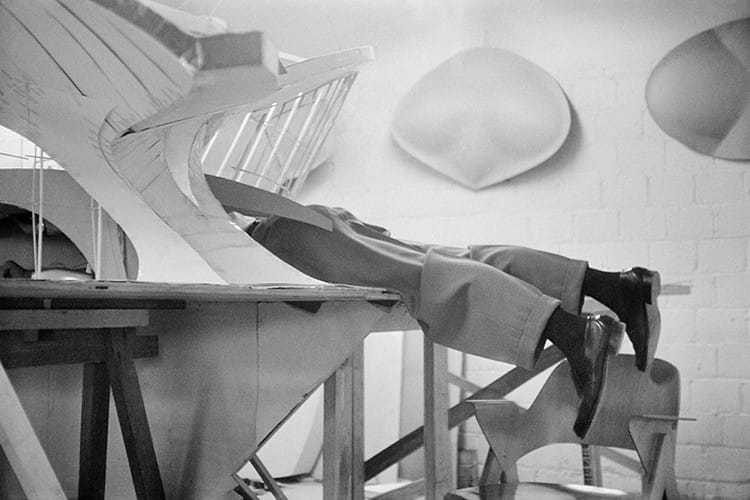
Further Accomplishments
Saarinen also designed Washington Dulles International Airport, the world’s first jet airport, and the Ellinikon International Airport in Athens, Greece. He designed the American embassies in London and Oslo. He designed only one skyscraper, the CBS Headquarters in New York City, and only one house, the Miller House, in Columbus, Indiana.
Eero was famously known for being obsessed with revision. He was also known to build large models that would accommodate his peering inside for a complete inspection.
He did the same with his furniture designs, building hundreds of models and full scale mock-ups to achieve the perfect curve, to find the right line, and derive the most pleasing proportions.
Saarinen’s furniture was mass-produced and was easily distinguished by its graceful, organic shapes. The Wombchair and the Tulip series of chairs and tables were symbols of the space age and were particularly popular.
Because of their futuristic style, Saarinen’s tables appear in Stanley Kubrick’s film 2001: A Space Odyssey.

A Place in Architectural History
Eero was elected a Fellow of the American Institute of Architects in 1952, and the Institute posthumously awarded him a gold medal.
Eero was also elected a member of the National Institute of Arts and Letters in 1954.
Of his work Eero stated, “The purpose of architecture is to shelter and enhance man’s life on earth and to fulfill his belief in the nobility of his existence… I hope that some of my buildings will have lasting truths, I admit frankly I would like a place in architectural history.” Mission Accomplished.
